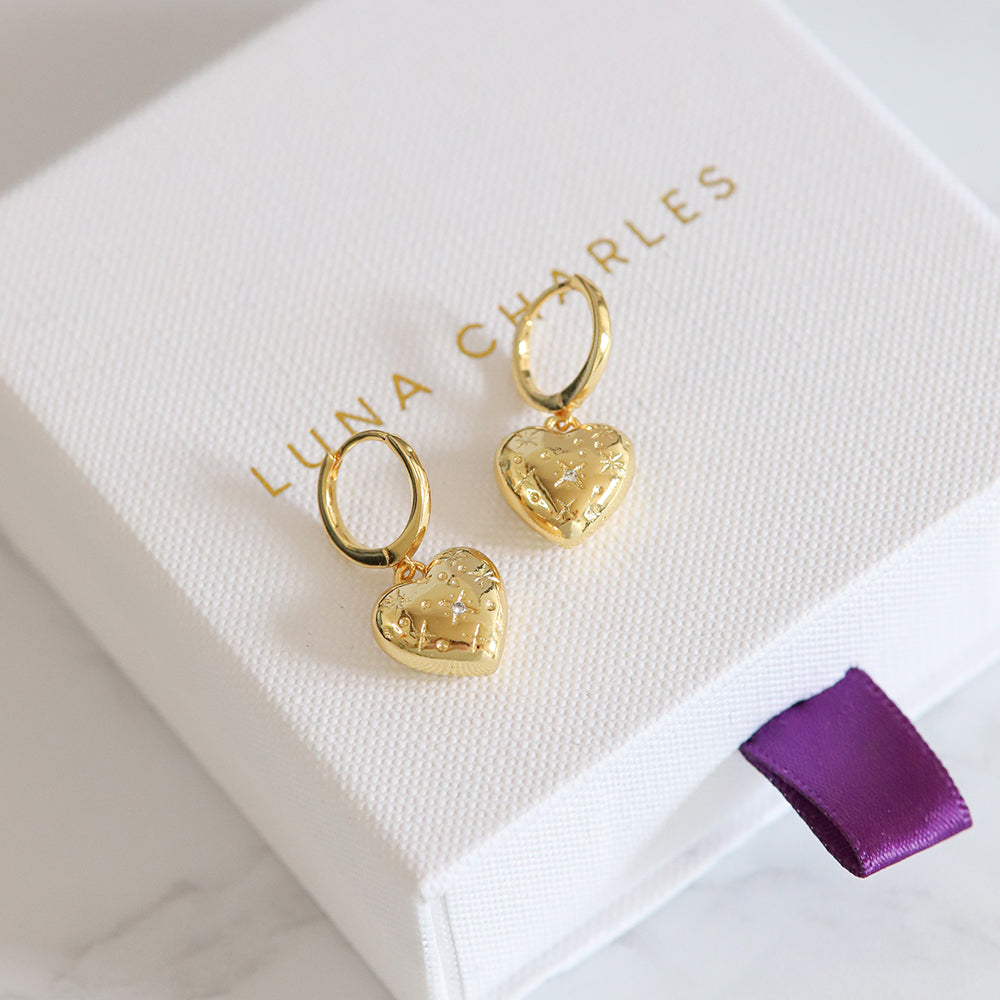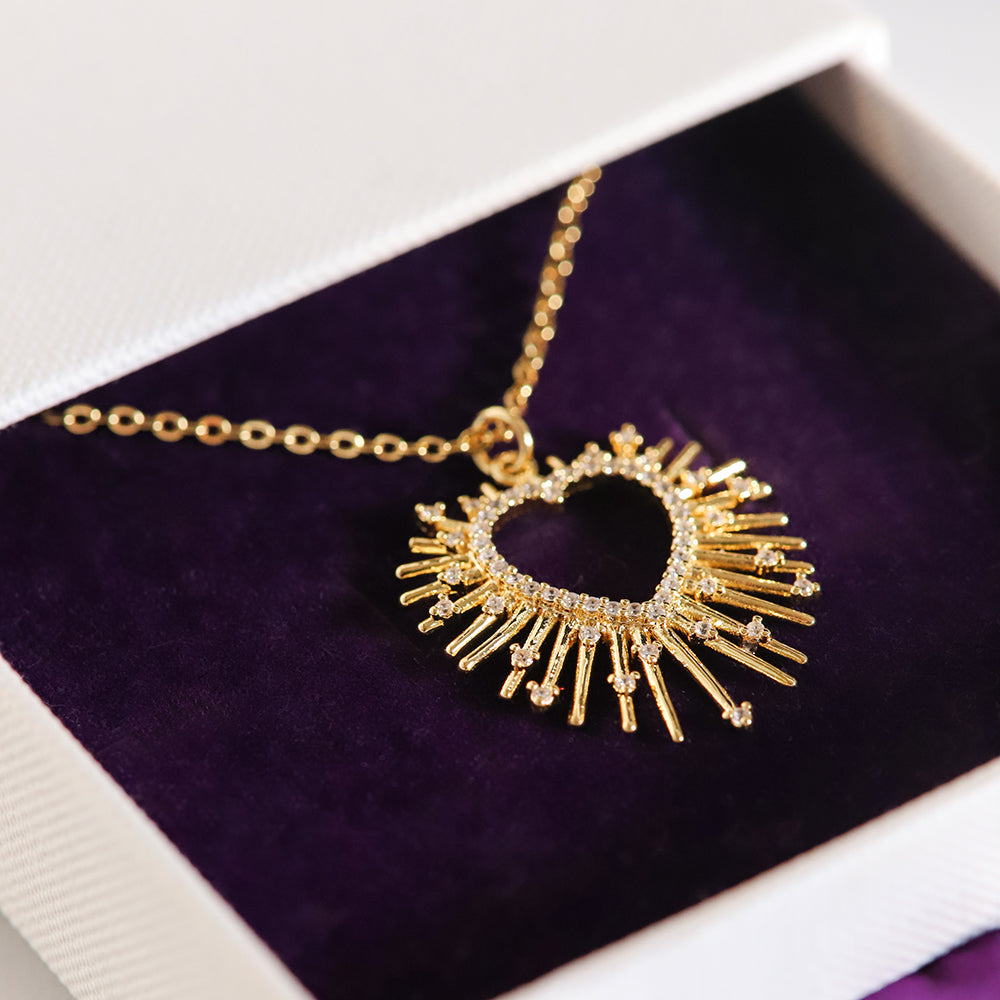Your Ultimate Guide to Birthstones & Birthstone Jewellery
Birthstones have been used since ancient times, when various gems were said to have mystical characteristics and were associated with specific months or zodiac signs.
It was originally assumed that wearing a gemstone during its allocated month would bring good luck, healing, and protection.
Birthstones are now commonly used as a decorative element in jewellery as a result of this tradition.
Birthstones are valuable not just for their physical attributes, but also for their historical and symbolic importance. Each gemstone has its own composition, hardness, and clarity, which all affect its look and durability.
Gemstones are valuable because of their scarcity and beauty, and they are widely used in beautiful jewellery. Each birthstone has its own tale and symbolism. For example, garnet, the January birthstone, is said to safeguard travellers, and diamond, the April birthstone, is connected with love, purity, and strength. May's birthstone, emerald, is said to provide foresight and wisdom.
Overall, the use of birthstones remains a popular and meaningful method to commemorate birthdays and other significant occasions. There is a gemstone for everyone to appreciate and enjoy, and we think they make the perfect birthday gift.


January Birthstone - Garnet
January Birthstone: Garnet
Where does the name come from: Derived from the Latin word for seed, granatum, the garnet is the red shade of a pomegranate seed.
Where it’s Found: Czech Republic, Greece, Russian, Tanzania, Madagascar, Sri Lanka, and India
Colour: While the most well-known garnet colour is the red of Pyrope Garnet, the stone also occurs in orange Mandarin Garnets and green Tsavorite Garnets.
Spirituality: Garnets are associated with kindness, pleasure, and purpose. Garnets are also thought to bring calm, prosperity, and health to a home.
Physicality: Garnet is believed to help heal wounds, promote metabolism, and cleanse the blood. It's almost anti-depressant, according to some. It includes a pay it forward element. It is said that those who perform good while wearing garnet would receive kindness.
History: Garnets were considered a symbol of life by the Egyptians. They were worn in signet rings by the nobility in ancient Rome and were also extremely popular throughout the Victorian era, being found in a wide variety of jewellery.


February Birthstone - Amethyst
February Birthstone: Amethyst
Where does the name come from: Amethustos, the ancient Greek word for sober, inspired the term amethyst. While it appears that the wordsmiths were drinking when they came up with this one, the term was actually based on the concept that wearing an amethyst could prevent the wearer from becoming inebriated.
Where it’s Found: USA, Canada, Brazil and Zambia.
Colour: Amethyst ranges in colour from deep purple to pastel pink and is commonly found in geodes or granitic rock cavities
Spirituality: Amethysts are said to boost creativity, passion, and harmony. The energy of an amethyst is often employed in meditation and is thought to help with steadiness, humility, and relaxation.
Physicality: Amethysts are known to have natural hormone balancing capabilities. Additional benefits include the potential to strengthen the immune system and minimise bruising and pain.
History: Amethysts were once as valuable as diamonds due to their scarcity. Amethyst was utilised as a royal symbol by monarchs. Among other things, the stone was thought to facilitate prophesy.


March Birthstone - Aquamarine
March Birthstone: Aquamarine
Where does the name come from: The peacefulness of the two Latin words that inspired its name, aqua for water and marina for sea, is evoked by the serenely tinted aquamarine.
Where it’s Found: Brazil, Nigeria, Madagascar, Zambia, Pakistan, and Mozambique
Colour: Aquamarines range in colour from pale to deep blue with some greenish blue varieties.
Spirituality: Aquamarine is utilised to help in meditation and spirituality. It is said to offer a sense of peace and tranquillity. It is a stone of empowerment that is thought to promote honest and empathetic communication.
Physicality: Aquamarine is said to heal sinus disorders, allergies and respiratory problems, tooth and gum problems, and tired eyes. It is referred to as a cooling gem.
History: Aquamarine was considered the treasure of mermaids by the Greeks and Romans. Sailors believed they could protect a ship from a storm and it was also thought to protect warriors in battle.


April Birthstone - Diamond
April Birthstone: Diamond
Where does the name come from: The Greek words adamas, which means indestructible, and diaphanus, which means translucent, were combined to generate the term diamond.
Where it’s found: Australia, Botswana, Canada, South Africa and Russia
Colour: The majority of diamonds are clear or white. The gem is also available in every colour of the rainbow. A fancy coloured diamond is any diamond that is not white.
Spirituality: Diamonds are thought to offer radiance, energy, and light to the soul. In difficult conditions, the extremely hard stone is said to bring strength and clarity.
Physicality: Diamond is regarded as a support stone as well as a master healer for unifying the mind and body. Diamonds are also regarded to be advantageous in terms of brain function and organ purification.
History: Diamonds were worn by warriors in ancient Greece to render them indestructible, while the Romans saw the stone as a symbol of innocence and purity. Diamonds were first used as engagement rings throughout the Renaissance.


May Birthstone - Emerald
May Birthstone: Emerald
Where does the name come from: Unlike other jewels, the root of the word emerald is difficult to trace in the Latin term for the gem smaragdus.
Where it’s found: Colombia, Brazil, Afghanistan and Zambia
Colour: Emerald ranges from yellow-green to blue-green with the finest being a pure green hue.
Spirituality: Emerald is thought to have numerous mystical properties. Negativity is claimed to be transformed into good energy, security, harmony, and spirituality.
Physicality: It was originally thought that simply glancing at an emerald could cure stomach, skin, and intestinal disorders. The stone was also supposed to be capable of calming the wearer's mood.
History: Emeralds were first mined in Egypt around 330 BC. The stone was famously gathered by Cleopatra. As a symbol of protection, the Egyptians used emeralds in jewellery and elaborate tombs.


June Birthstone - Pearl
June Birthstone: Pearl
Where does the name come from: The name pearl stems from the Latin word for leg, perna. It's a clever reference to the leg-of-mutton form of an open mollusc shell.
Where it’s found: China, Australia, Philippines and Indonesia
Colour: Pearls, the only gem created by living creatures, come in a variety of colours ranging from white to black Tahitian pearls and rare pink Conch pearls.
Spirituality: Pearls are thought to provide balance and emotional healing. The gem is also connected with loyalty, modesty, and purity.
Physicality: Pearl powder has been used throughout history to cure the digestive tract, preserve strong bones, and brighten skin.
History: Pearls were thought to be gods' tears by the ancient Greeks, and thought to be moon tears by Hindus. Because the gem was so popular among the nobles, Tudor England became known as the Pearl Era.


July Birthstone - Ruby
July Birthstone: Ruby
Where does the name come from: The name ruby comes from the Latin word for red, rubeus.
Where it’s found: Burma, Vietnam, Thailand, India, Middle East, East Africa and the USA.
Colour: The element chromium is responsible for the ruby's rich red colour, as well as the gem's internal glow. The greatest colour of rubies is known as "pigeon's blood," which sounds horrifying.
Spirituality: Rubies have long been associated with passion, protection, and success. The gem is thought to increase vitality, heighten consciousness, encourage courage, and bring success in fortune, love, and battle.
Physicality: The stone is used to purify the body and repair the heart and respiratory system. It is thought to invigorate and balance, stimulate the heart chakra, and encourage a passion.
History: Rubies were used as amulets to ward off plagues and diseases in ancient times. At the period of the Judean Temple, it was also thought to be the most valuable of gems, since its passion and energy was meant to bring love, success, and good fortune.


August Birthstone - Peridot
August Birthstone: Peridot
Where does the name come from: There is some disagreement over the origin of the name, although most assume it is derived from the Greek word for abundance, peridona.
Where it’s found: Arizona, China, Myanmar, Pakistan and Africa
Colour: It is one of the few gemstones that solely occurs in one colour, green. Depending on the amount of iron present, the colours range from lime green to olive and brown.
Spirituality: Peridot is thought to promote clarity as well as feelings of happiness, honesty, and understanding. Believers say it gives them the ability to take responsibility and make decisions, which leads to prosperity and good fortune.
Physicality: The stone is thought to help the digestive system. During childbirth, it was utilised as a talisman. Its green energy assists with internal harmony, restful sleep and discharging negative feelings.
History: Peridot was known as the sun gem by the ancient Egyptians. They believed it protected the user from nighttime terrors and controlled the force of nature.


September Birthstone - Sapphire
September Birthstone: Sapphire
Where does the name come from: The word sapphire is derived from the Latin sapphirus and the Greek sappheiros. Both terms refer to blue stone.
Where it’s found: Kashmir, Burma, Sri Lanka, Thailand, Vietnam and India among other places.
Colour: Although sapphire is commonly associated with blue, the gem is available in every colour of the rainbow except red.
Spirituality: Sapphires are thought to represent loyalty, dignity, sincerity, and integrity. They are associated with concentration, self-discipline, and channelling higher powers.
Physicality: Blue sapphires are thought to be a cure-all that can accomplish almost anything, including help insomniacs sleep.
History: When seeking answers from the oracle, Greeks wore sapphire, while Buddhists felt it gave spiritual enlightenment and Hindus used it during worship. When sapphires were fashionable in Byzantine jewellery in the sixth century, they were known as hyakinthoi (hyacinths).


October Birthstone - Opal
October Birthstone: Opal
Where does the name come from: The name opal comes from the Greek word opallios, which means to watch a colour change.
Where it’s found: Australia, Brazil, Honduras, Ethiopia, and Czech Republic
Colour: Tiny silicon spheres that diffract light to display distinct rainbow colours form a kaleidoscope of one-of-a-kind colour combinations, commonly known as Precious Opals.
Spirituality: Opal is thought to be the best gem for attracting positive energy and centering the mind for prayer and meditation because it is a stone of light.
Physicality: A therapeutic and emotionally uplifting stone, it is considered to have characteristics that purify the blood, stimulate memory, and regulate hormones.
History: Opals, according to Arabic tradition, fell from the sky as lightning bolts.


November Birthstone - Topaz
November Birthstone: Topaz
Where does the name come from: Topazios, the ancient Greek name for St. John's Island in the Red Sea, inspired the name topaz.
Where it’s found: Brazil, Pakistan, India, Sri Lanka, Russia, Nigeria, Germany, and the United States
Colour: Topaz is colourless in its purest form. Impurities change the colour of the stone to blue, pink, yellow, and brown. The rich orange of Imperial Topaz is the most desired.
Spirituality: Topaz is believed to strengthen faith and trust.
Physicality: Yellow topaz is thought to be an antidepressant and brain enhancer. Blue topaz is thought to be a calming stone that clears the mind.
History: Topaz represented Ra, the sun god, to the ancient Egyptians. It was revered by the Greeks and Romans for its capacity to provide strength and avoid damage. The Hindus believed that wearing topaz above the heart would ensure long life, beauty, and wisdom, as well as protect their dwellings from fire.


December Birthstone - Turquoise
December Birthstone: Turquoise
Where does the name come from: The name turquoise derives from the French tourques for Turkish stone. In the 13th century, traders from Turkey brought the Persian blue stone to Europe via the Silk Road.
Where it’s found: Iran and the United States
Colour: Turquoise ranges in color from powdery blue to greenish eggshell blue.
Spirituality: Turquoise is thought to provide healing and cleansing properties. It is supposed to improve understanding, trust, generosity, and the recognition of beauty.
Physicality: Turquoise is a strong stone, useful for weariness, depression or panic attacks.
History: Since ancient times, cultures all across the world have enjoyed the unusual blue of turquoise. Egyptians prized it and set it in necklaces, Persians used it in daggers and battle necklaces, and Native Americans utilised it in sacred rites.

















